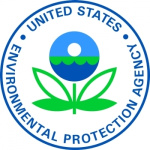- Branche: Government
- Number of terms: 11955
- Number of blossaries: 0
- Company Profile:
U.S. Environmental Protection Agency (EPA) is a federal agency responsible for the development and enforcement of regulations for human health and environment protection. The agency researches and sets standards for environmental programs and delegates. It was founded in 1970 following the proposal ...
A cylindrical section of ice removed from a glacier or an ice sheet in order to study climate patterns of the past. By performing chemical analyses on the air trapped in the ice, scientists can estimate the percentage of carbon dioxide and other trace gases in the atmosphere at a given time. Analysis of the ice itself can give some indication of historic temperatures.
Industry:Natural environment
Common measurement for a ton in the United States. A short ton is equal to 2,000 lbs or 0.907 metric tons.
Industry:Natural environment
Particulate matter that consists of compounds of sulfur formed by the interaction of sulfur dioxide and sulfur trioxide with other compounds in the atmosphere. Sulfate aerosols are injected into the atmosphere from the combustion of fossil fuels and the eruption of volcanoes like Mt. Pinatubo. Sulfate aerosols can lower the Earth's temperature by reflecting away solar radiation (negative radiative forcing). General circulation models which incorporate the effects of sulfate aerosols more accurately predict global temperature variations.
Industry:Natural environment
The natural circulation of nitrogen among the atmosphere, plants, animals, and microorganisms that live in soil and water. Nitrogen takes on a variety of chemical forms throughout the nitrogen cycle, including nitrous oxide (N2O) and nitrogen oxides (NOx).
Industry:Natural environment
The component of the climate system comprising liquid surface and subterranean water, such as: oceans, seas, rivers, fresh water lakes, underground water etc.
Industry:Natural environment
A technique that uses soil moisture conservation and seed selection to optimize production under dry conditions.
Industry:Natural environment
Sudden (on the order of decades), large changes in some major component of the climate system, with rapid, widespread effects.
Industry:Natural environment
The process by which water changes from a liquid to a gas or vapor.
Industry:Natural environment
The process of evaporation, vertical and horizontal transport of vapor, condensation, precipitation, and the flow of water from continents to oceans. It is a major factor in determining climate through its influence on surface vegetation, the clouds, snow and ice, and soil moisture. The hydrologic cycle is responsible for 25 to 30 percent of the mid-latitudes' heat transport from the equatorial to polar regions.
Industry:Natural environment
